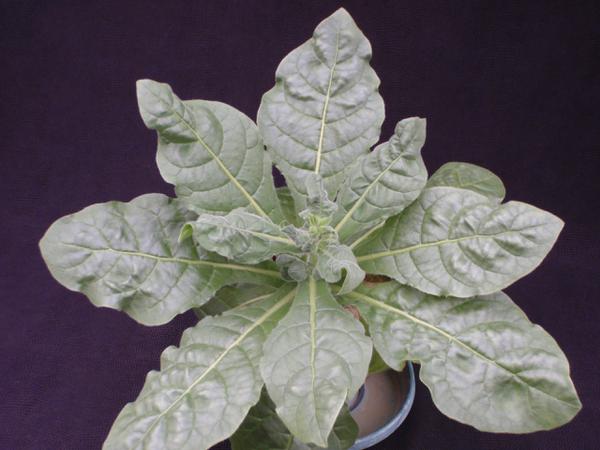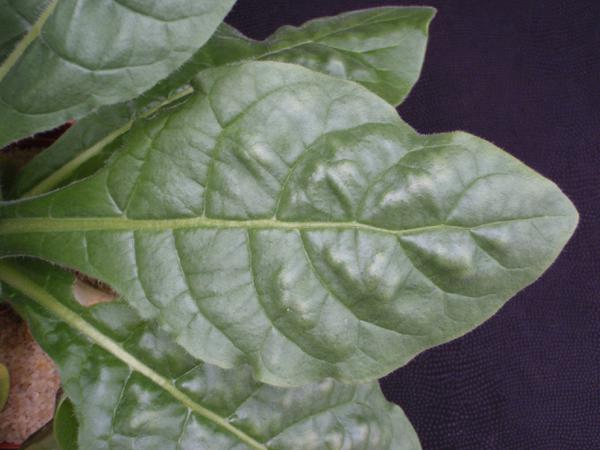Zinc Deficiency
Unlike the macronutrients, micronutrient deficiencies are rare. Zinc (Zn) deficiency has not been reported under field conditions. Most of the time, the soil will have enough micros to supplement any gaps in the chosen fertilizer plan. To present a more robust set of data, we induced Zn deficiency under controlled greenhouse studies for accurate diagnosis if the problem should arise. In NC State University trials, ornamental tobacco developed a silver cast to the leaves as the initial symptom of zinc deficiency.
- Type
- Nutrition
- Leaf Location
- Younger
- Leaf Condition
- Interveinal chlorosis, Complete chlorosis
- Leaf Color
- Chlorosis (yellow), Necrosis (brown)
Problem
Nutritional disorder – zinc (Zn) deficiency.
Symptoms
Unlike the macronutrients, micronutrient deficiencies are rare. Zinc (Zn) deficiency has not been reported under field conditions. Most of the time, the soil will have enough micros to supplement any gaps in the chosen fertilizer plan. To present a more robust set of data, we induced zinc deficiency under controlled greenhouse studies for accurate diagnosis if the problem should arise.
In NC State University trials, ornamental tobacco developed a silver cast to the leaves as the initial symptom of zinc deficiency.
(Descriptions based on the book, Hunger Signs of Crops, 3rd Edition, edited by H.B. Sprague.) Under controlled greenhouse conditions, tobacco plants are stunted when zinc is limited. The middle to lower foliage of the plant develops a chlorotic leaf spot which (Figure 1) can later turn necrotic. These chlorotic spots can take on a metallic appearance, and will eventually become larger if the deficiency is not treated.
Similar Problems
Symptoms appear to be similar to when phosphorus is limited. Submit a tissue sample for analysis to help diagnose the problem.
Additional Information
Zinc is required is very low concentrations, so deficiencies under field conditions is unlikely. First try and diagnose the problem with the symptomology of the macronutrients in mind. If none of the macros seem to fit the symptomology being exhibited by the plant, submit a tissue sample or contact your local extension office.
Diagnostic Tips
The sufficiency range for zinc is between 20 and 60 ppm for burley tobacco. A slight refinement of the range is available for flue cured tobacco, with 20 and 60 ppm zinc being recommended from planting until maturity, and a lower range of 18 to 60 ppm recommended at harvest for the upper, middle, and lower leaves.
Corrective Measures
Provide zinc with your fertilization program.
Management
Provide zinc with your fertilization program.
Funding Source
Funding was provided in part by the North Carolina Tobacco Foundation.
Project Team
Josh Henry (NC State M.S. student in Horticultural Science), Paul Cockson (NC State B.S. student in Agroecology), Ingram McCall (Research Technician in Horticultural Science), Rhonda Conlon (Extension IT at NC State), Matthew Vann (Tobacco Extension Specialist, Dept. of Crop and Soil Sciences), and Brian Whipker (Professor of Floriculture and Plant Nutrition in Horticultural Science).




